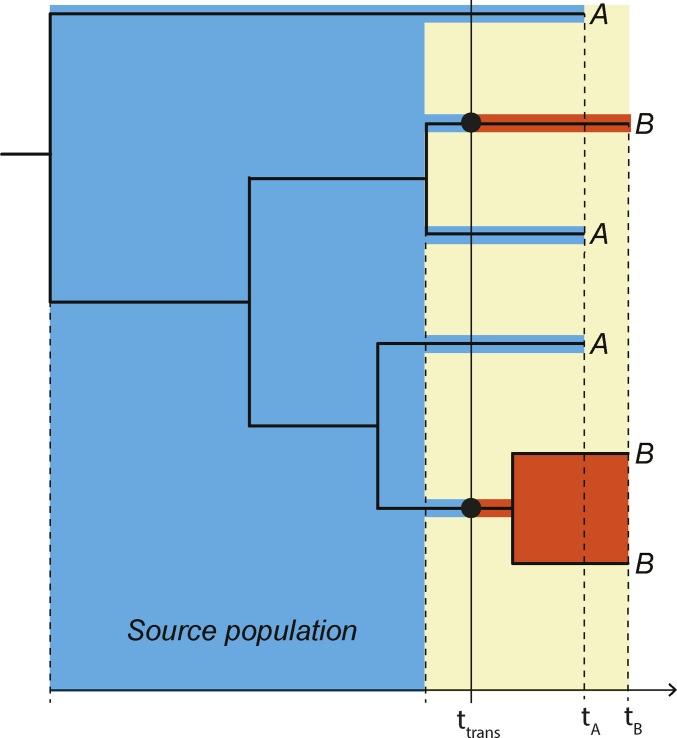Figure 2.
Principle joint donor-recipient time-scaled phylogeny. When a donor (A, blue) infects a recipient (B, red), the possible time-interval when transmission could have occurred (yellow field) is restricted in a time-scaled topology of when the most recent donor-recipient (A–B) coalescence occurred among the sampled lineages and when the recipient was sampled at tB. The actual transmission (ttrans) must have occurred in this interval. The “source population” in direct transmission exists in the donor (blue field), from which at least two lineages were transmitted in this example to the donor (red fields). We refer to the populations that exist in each host after transmission as the “derived populations.” Note that if ttrans occurred later at least three lineages could have been transmitted.

